Going for an off the lead dog walk is exactly that, they are roaming free without their lead attached and you as the owner are also freed from the shackles to have a truly relaxing walk. Off the lead dog walks in a controlled manner is the ultimate reward when you and your dog have a great bond and your dog is well trained, obedient and has an even temper.
In this JugDog training guide, we are going to go into detail about what an off the lead dog walk is, how to train for a walk without the lead, what to look out for during it and great places around the UK to go and enjoy them.
Even though every dog can be capable of great things, some breeds are more naturally gifted to be trained easily than others. Every dog can be walked relatively easily off its leads but the one thing that must be done every time is training, training and some more training.
Off the lead dog walks are perfectly legal in the UK as long as the dogs are under control, particularly when it involves third parties which are not limited to human beings. An off the lead dog should be under control when near other animals too, especially Farmer’s livestock.
You can see the Government page on off the lead laws here. There are two takeaways here:
- Walking your dog off the lead (see also ‘How To Perfect Using Different Dog Leads Successfully‘) is legal
- Having an out of control dog off the lead is illegal
These rules even apply inside your own home. If your dog is off the lead and out of control you can be fined an unlimited amount and even face prison times. Although this is probably an article for another time.
How to train your dog to be good off the lead?
Before even considering letting the dog off the lead you need to make sure you’ve done the training. Unless it’s too late, the best time to train your dog to be off the lead is when they are a puppy.
Of course, this is not to say you can’t train you adult dog to be under control when free walking it’s just that it might be a bit more challenging. We mentioned the three pillars of off-lead training at the start and we are going to go through them in a bit more detail here.
Step 1: Start with recall training.
Recall training should be one of the most important pieces of training regardless of the off-the-lead stuff. If your dog doesn’t know your name and doesn’t recognise your voice then it makes dog ownership difficult at the best of times. Before even contemplating letting your dog roam free outside the comforts of your home you must make sure your dog’s recall is excellent.
And by excellent we mean your dog will hear and return to you when you call them 100% of the time. There shouldn’t be any margin of error here. We have covered recall in some detail on the training page, but we also recommend this brilliant (and cheap book):
An excellent recall is a staple between a healthy bond and a great off lead dog walking session, it can even be a lifesaver if you or your dog get separated and you haven’t invested in a dog tracker. Another item which can make recall training outside even easier is the use of a dog training whistle, we’ve compiled a list of our favourites.
- Train your dog using ultrasonic frequencies tuned to their hearing
Step 2: Teach your dog to ignore distractions.
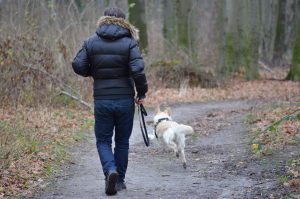
It’s really important that your dog is able to ignore distractions and stay focused when needed, we don’t mean that your dog should be able to ignore every human and dog they pass because you’d want your dog to be friendly with others.
What we mean is that your dog will not go off and run after another dog or even a person randomly. They shouldn’t be distracted by much and they will know to stop when called by you.
Training your dog to ignore distractions can be done off the lead and at home and there’s no need to do this training off the lead. Admittedly, this can be a bit tricky so we recommend going to puppy classes as usually this activity is covered then.
Being distracted by something from time to time in a safe environment is usually harmless but serious distractions could be
- Running towards dangerous dogs (on or off the lead)
- Chasing something that runs across a busy road
- Distracted by something they shouldn’t eat
- Generally being an annoyance and ruining other people’s walks
With this in mind, train your dog to be focused on the mission at hand: being a good doggy while off the leash. This goes hand in hand with great recall.
Step 3: Teach them to understand their boundaries.
Understanding where they can and can’t go is essential for a safe walk without a lead. Many people may not be able to get to this part until the recall is down to pat, though.
Basically, your dog needs to understand and see an invisible boundary where they can’t go. Reading between the lines you will understand that these means don’t go anywhere near roads. We feel that distance training is the best way to get dogs to get a grasp of how far they can go before they go no further.
How do you do this? Well, we used extendable leads and extra long leads at first for a safe on lead training session.
- Customizable 5 m tape lead with clever accessories and interchangeable belts for dogs weighing up to 25 kg
- VARY SIZE & COLOUR : Vary in length 33m/100ft, 20m/65ft, 15m/50ft, 10m/33ft, 5m/15ft, 3m/10ft, with 2cm width. You can choose from 6 sizes for different demands. 4 colour options of black, red, blue and green, very easy to see while using
How can you begin having off the lead walks?
So, you know it’s perfectly legal to have off the lead walks, you know the essential skills for them and some tips on what to buy. Now let’s see how you can easily transition your dog into taking these walks.
Step 1: Take regular walks at peak times with an extendable lead.
We recommend starting (or continuing) off lead training by giving them more freedom than they’re used to at a time where there are plenty of distractions about with the use of extended leads and a comfy harness.
Use positive reinforcement by giving them treats when they do a desirable action that you’d want if they weren’t on the lead. To be clear, while doing this step, test and reward them by:
- Take them near boundaries and praise them if they go no further
- Rewarding them for walking past people/animals without being distracted (a quick hello is still fine)
- Make sure they use the full extension of the lead but not pull
We recommend doing this for a couple of weeks to a month and only move on after good, consistent behaviour!
Read More: 5 Best Extendable Dog Leads – Retractable Leashes For More Freedom
Step 2: Practice walks and recalls in an enclosed area.
Find a sealed place where dogs can’t run away from. It can be your garden or it could be a dog section in the park (some parks have this) and just set them free!
Watch how they behave and keep on using positive reinforcement on all desirable behaviour. Be aware of other dogs entering this area and try to let them meet each other on the lead first before letting them play off the lead.
When doing this step, don’t just let them wander around as you just watch, try and walk them around and keep recalling them – essentially, try to mimic what a walk would be like. Again, don’t rush this step, take your time and give it a few weeks/months to get perfect before moving on.
Step 3: Let them off the lead in short bursts.
Once you and your dog have got to grips with the basics it’s time to really give it a go. For step 3, we recommend taking them on a familiar walk when it’s not busy and full of distractions and then giving them some off-lead time in short bursts.
Let them regularly have the off the lead time and add a bit more time and distance every now and then over a few weeks/months. Get their and your confidence up. Don’t forget to keep up that all-important positive reinforcement here! It’s extra important at every step!
Step 4: Go off lead more often.
At this point, letting them off the lead regularly but using recall and putting them back on the lead if you spot any trouble ahead is the penultimate step.
For this stage you should be very confident in your dog’s ability to stay close, to come back instantly when recalled and to know where they can go and where they can’t. If you aren’t there yet please don’t put your dog at risk and run before they can walk (no pun intended!).
Step 5: Take them on a great adventure trail / nature park.
Is your dog brilliant off the lead? Why not treat yourself and your dog to a new nature trail / adventure walk and let them really explore!
Even though some of these places aren’t technically enclosed they are vast in size and in general full of other friendly dogs who can behave off the lead. We feel this step, although optional, is a fantastic way to really bond and further train your dog.
At the bottom we’ve listed some great places to take your dog off the lead, if you know of a good one we’ve missed please let us know in the comments section and we’ll check it out!
Read More: Best Flea Treatments For Dogs UK 2021 – Get Rid Of Fleas NOW!!
Best Places to Take Your Dog For Off Leash Walks

Some places are better at letting your dog off the leader than others, we recommend looking to see if one of these is near you and head there!
Dog Parks
Dog parks, naturally, are the best and most commonplace. A dog park is usually just a normal local park but it may have fenced off areas or even completely sealed areas specifically made for dogs. Queens Park in St. Helens (our local park) is one example of a park-like this.
Beaches
A beach is a fantastic place for off the lead dog walks as it’s typically very spacious and relatively safe. If your dog loves the drink then there’s a bit of swimming they can get on with, just keep an eye on them and don’t forget the recall training.
National Trust Parks
National trust parks are everywhere and are generally well made with clear walking paths from start to finish as well as being fenced in at the edges. National trust parks are one of the best places for a safe and enjoyable off-lead walk.
When not to let them off the lead?
We believe there are certain situations when a dog owner should never let their dog off the lead in particular if they’ve never been trained before. Off the lead walking can pose some challenges and should be avoided if:
- You have a rescue dog or have taken ownership of an adult dog with an unknown past
- A very young puppy
- A nervous or skittish dog
- You have a dog that doesn’t like other dogs (potential out of control behaviour)
- You can see dangerous dogs in the area (put them back on the lead for safety)
- It’s very dark
Does a dog’s breed affect off-leash training?
It kinda does. While any breed can be trained to be excellent off the lead and no breed is born destined to be tethered outside, however, there are some breeds out there which are easier and faster to train as well as other breeds which can be more difficult and require more time. Here’s a handful:
- German pointer
- Labrador
- Golden Retriever
- Spaniels
- English Setter
- Spanish Water Dog
- Border Collie (Sheepdog)
- Poodle
- German Shepherd
- Rottweiler
- A crossbreed with one of the above
This is not an exhaustive list and in general gun dogs and herding dogs are naturals off the lead and very cooperative with training.
Breeds which can be tricky:
- Afghan hound
- Borzoi
- Greyhound
- Jack Rusell Terrier
- Wolfhounds
- Whippet
- A mix which includes the above
In general, breeds which are made for hunting (not retrieving) can be tricky as they can be easily distracted by prey (or what they perceive to be prey) and not as cooperative with training and recall).
Last update on 2024-02-02 / Affiliate links / Images from Amazon Product Advertising API
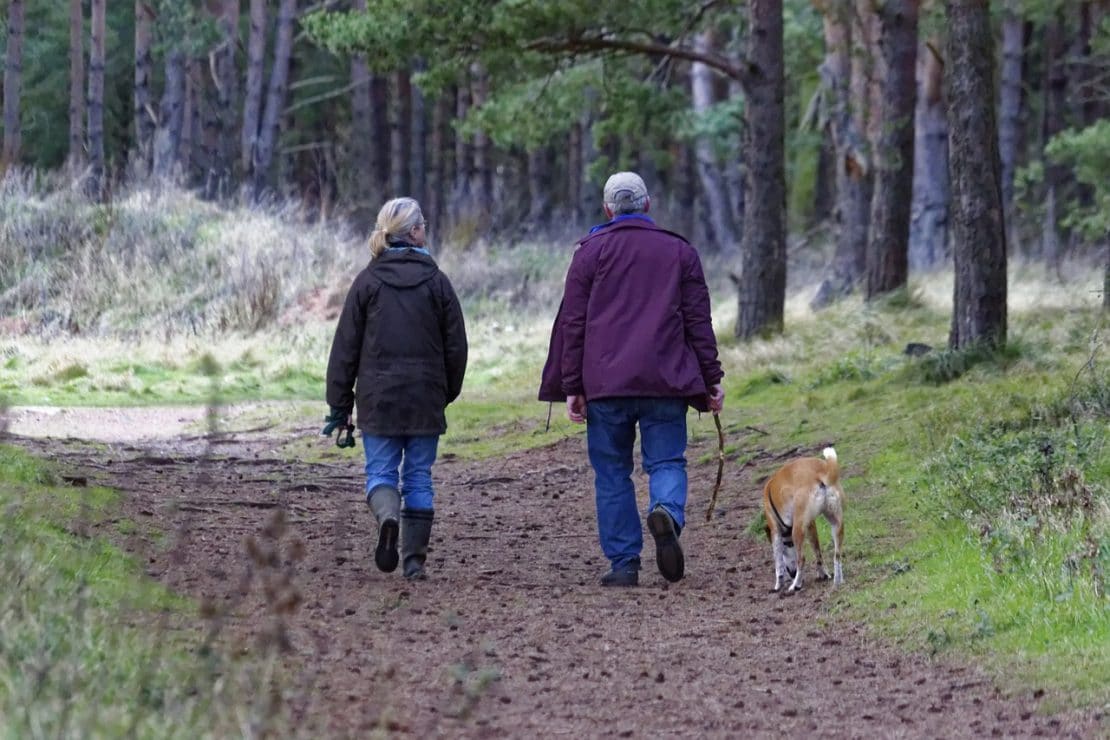




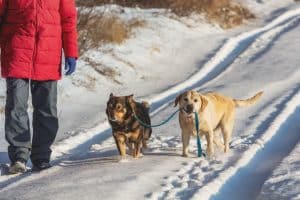
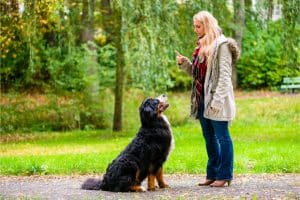

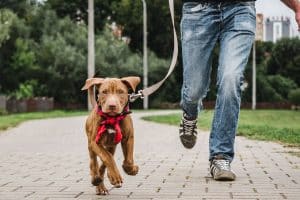
Nice article, my dog is a GSD/Siberian Husky and is very prey driven. I have him off lead as often as possible but I know if he sees what he perceives as prey he will chase it no matter what.
I am still working on this every time we go out but it seems to be ingrained in his mind to chase.
Thanks John